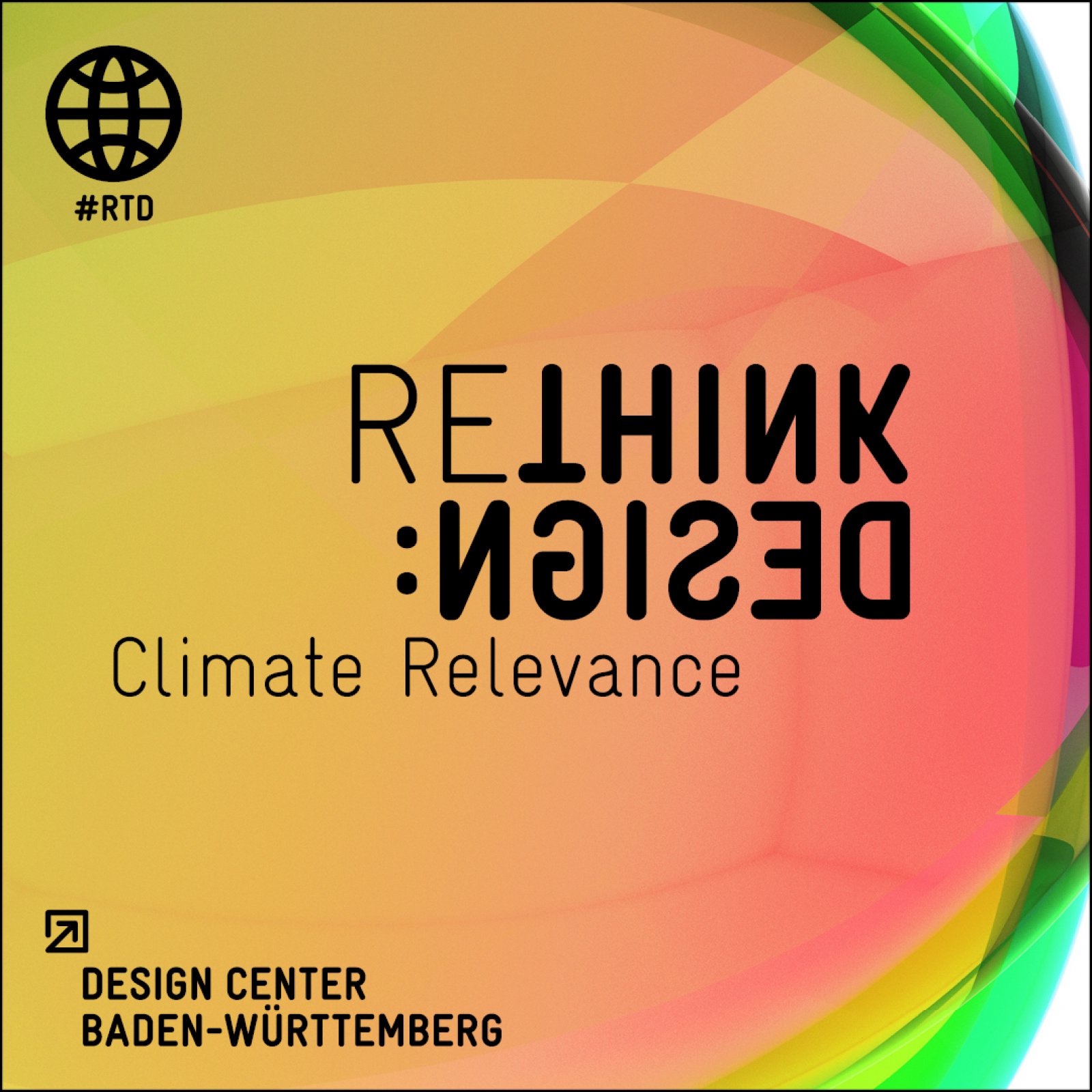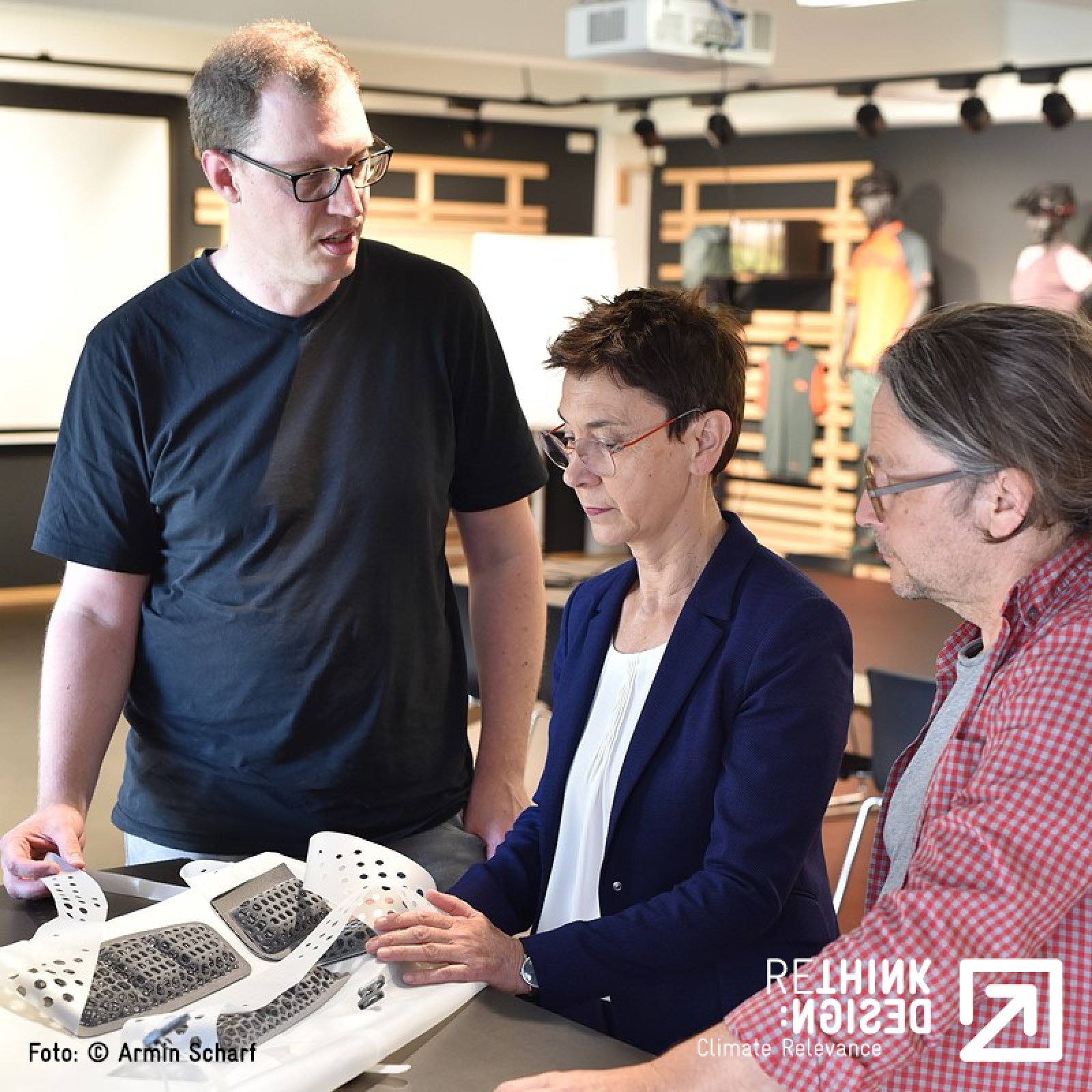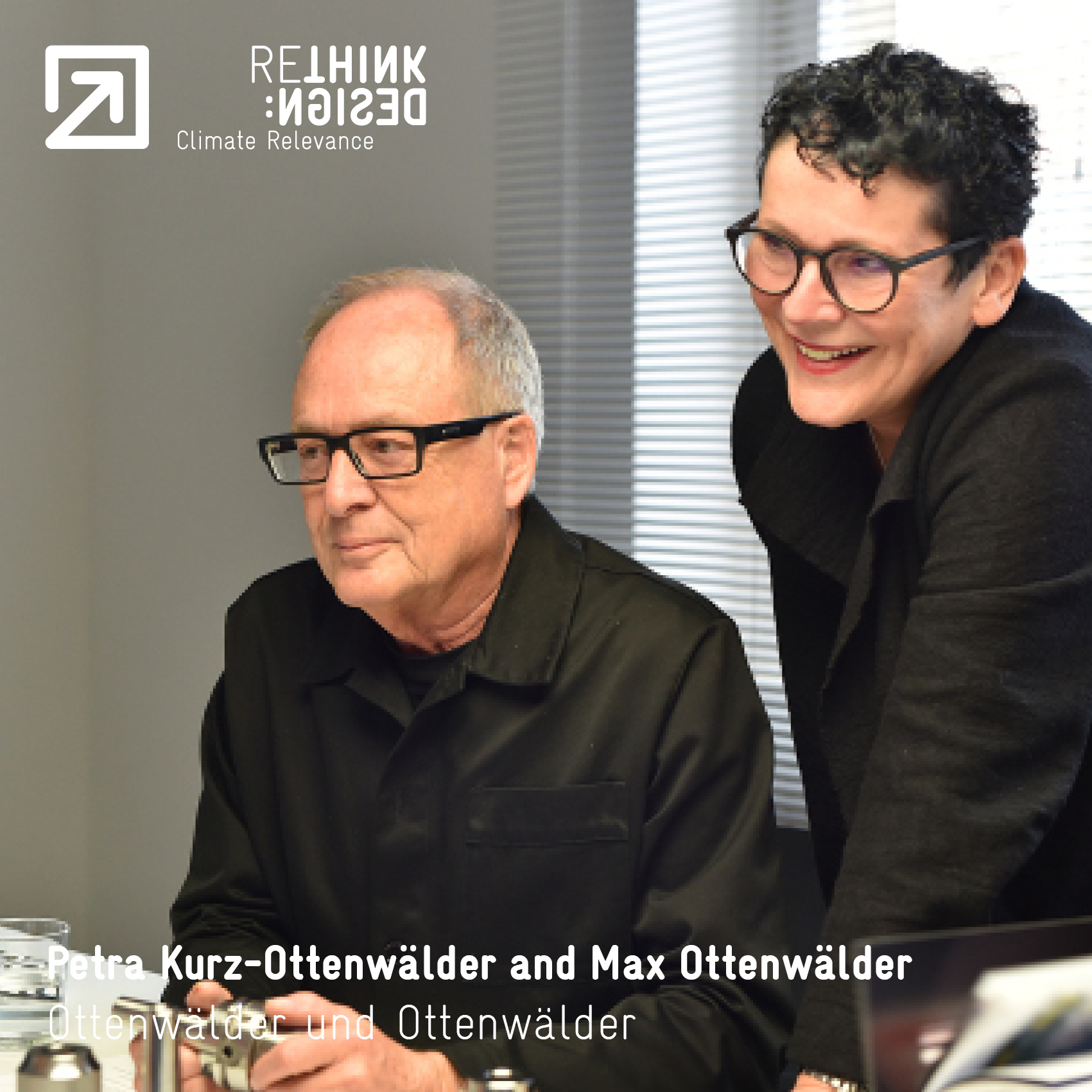

Dear Readers,
Welcome to the June 2022 issue of our special newsletter in conjunction with our new RETHINK:DESIGN Climate Relevance format. In this series, we present examples of best practice for promoting the climate-friendly transformation of the economy and society. RETHINK:DESIGN shows what impact design has on resource use, emissions, the circular economy and climate protection.
We’ll be looking at enterprising concepts, shining a light on research, and looking for new mindsets and approaches for accelerating design’s sustainable momentum.
RETHINK:DESIGN – let’s get started!
“What matters is that management wants the transformation!”

We paid a visit to Vaude at its headquarters near Tettnang for an interview. The outdoor brand is regarded as one of the industry’s leading sustainability pioneers. Since this year, all the products it manufactures across the globe have been climate-neutral too – despite the long supply chains involved. Head of design Mario Schlegel and innovation manager René Bethmann gave us some fascinating insights into the company that we’re delighted to share with you here.
A conversation about innovation, the visibility of sustainability and the interaction between innovation, design and technology.
“Ultimately we create a symbiosis of visible sustainability and actual sustainability.”

In conversation with head of design Mario Schlegel and innovation manager René Bethmann
At its headquarters near Tettnang in Baden-Württemberg, Vaude has been climate-neutral since as far back as 2012. The outdoor brand is in the process of gradually switching its product portfolio to recycled or bio-based materials. We spoke to head of design Mario Schlegel and innovation manager René Bethmann about cooperation between technology and design, supply chains and the challenge of observing and evaluating innovations so as to ultimately get them off the ground with their partners. And: just because something looks sustainable doesn’t mean it really is sustainable.
By the way, the company passes its experience on as well: with the recently established Vaude Academy, it has created a tool for showing companies and institutions from other industries strategies for more sustainability.
By the way, the company passes its experience on as well: with the recently established Vaude Academy, it has created a tool for showing companies and institutions from other industries strategies for more sustainability.
It’s often said that technology and design teams don’t always see eye to eye. How does that work out at Vaude, a company that is totally committed to sustainability?
Mario Schlegel: Technology is impossible without design, and the reverse is true as well: in order to design I always need technology. As a designer, I also have to be willing to accept that, every once in a while, the technology team will say something can’t be done the way I’d like. But that’s not a problem for me.
René Bethmann: Ultimately we create a symbiosis of visible sustainability and actual sustainability. That symbiosis is the goal, but obviously the path that leads to it isn’t that simple. We have no shortage of creative ideas, but we evaluate each and every one of them very precisely. A textile with irregularities might look sustainable, but that doesn’t automatically mean that it really is sustainable. That frequently leads to intense discussions between the design team and us engineers, but basically we get along really well.
René Bethmann: Ultimately we create a symbiosis of visible sustainability and actual sustainability. That symbiosis is the goal, but obviously the path that leads to it isn’t that simple. We have no shortage of creative ideas, but we evaluate each and every one of them very precisely. A textile with irregularities might look sustainable, but that doesn’t automatically mean that it really is sustainable. That frequently leads to intense discussions between the design team and us engineers, but basically we get along really well.
That brings us to the big question: how important is if for a product to make its sustainable character visible?
René Bethmann: At the end of the day the customer should be able to see that a product is sustainable, without having to read a long text. Achieving that remains a major challenge.
Mario Schlegel: As the person in charge of design, my opinion is that sustainability is a quality that you have to be able to see, but not always and not everywhere. Today sustainability isn’t about sheepskin, it’s about finding alternatives that can replace petroleum-based materials. The new materials meet the functional requirements and are more sustainable, but look almost identical. That’s why it’s important for our collection to have a few products that stand out and visualise their sustainability in an unmistakable way. Then those beacon products provide support for the rest of the portfolio, which is no less sustainable.
Mario Schlegel: As the person in charge of design, my opinion is that sustainability is a quality that you have to be able to see, but not always and not everywhere. Today sustainability isn’t about sheepskin, it’s about finding alternatives that can replace petroleum-based materials. The new materials meet the functional requirements and are more sustainable, but look almost identical. That’s why it’s important for our collection to have a few products that stand out and visualise their sustainability in an unmistakable way. Then those beacon products provide support for the rest of the portfolio, which is no less sustainable.


Given that it’s such a strong brand, does Vaude actually still need to visualise sustainability at all?
René Bethmann: It’s not the case that everybody equates Vaude with sustainability. We’re strongly represented in Germany, Austria and Switzerland, but we’re not that well known in other markets. That’s why it’s important [...]
Click here to read the full interview.
Click on the links below to access our previous content:

Ottenwälder und Ottenwälder
“It’s really not that complicated!”
Can design agencies be climate-neutral? Yes, says Petra Kurz-Ottenwälder.
Read the interview here.

Prof Tina Kammer
“The future starts today!”
The transformation away from a linear throwaway society and towards a circular economy calls the design process used so far into question. To meet their responsibility, companies have to integrate circular processes – and design is a crucial starting point for that. To what extent can that help minimise the impacts on the environment and humans and give rise to a sustainable economic system? The talk by Prof Tina Kammer explores the opportunities presented by these developments.
Click here to watch the talk (in German).

Christiane Nicolaus
“Sustainability is driving innovation!”
What can designers contribute in terms of saving the global climate? A lot, says Christiane Nicolaus, director of the Design Center Baden-Württemberg. She also believes that climate-friendly design can result in a competitive advantage. An interview about RETHINK:DESIGN and a new departure for an industry.
Read the interview here.
Are you also on your way to becoming climate-neutral? What prompted your decision?
Write to us at: design@rps.bwl.de
Click here to read the full interview.
Click on the links below to access our previous content:

Ottenwälder und Ottenwälder
“It’s really not that complicated!”
Can design agencies be climate-neutral? Yes, says Petra Kurz-Ottenwälder.
Read the interview here.

Prof Tina Kammer
“The future starts today!”
The transformation away from a linear throwaway society and towards a circular economy calls the design process used so far into question. To meet their responsibility, companies have to integrate circular processes – and design is a crucial starting point for that. To what extent can that help minimise the impacts on the environment and humans and give rise to a sustainable economic system? The talk by Prof Tina Kammer explores the opportunities presented by these developments.
Click here to watch the talk (in German).

Christiane Nicolaus
“Sustainability is driving innovation!”
What can designers contribute in terms of saving the global climate? A lot, says Christiane Nicolaus, director of the Design Center Baden-Württemberg. She also believes that climate-friendly design can result in a competitive advantage. An interview about RETHINK:DESIGN and a new departure for an industry.
Read the interview here.
Are you also on your way to becoming climate-neutral? What prompted your decision?
Write to us at: design@rps.bwl.de